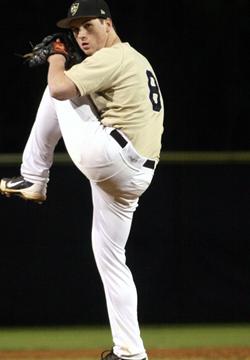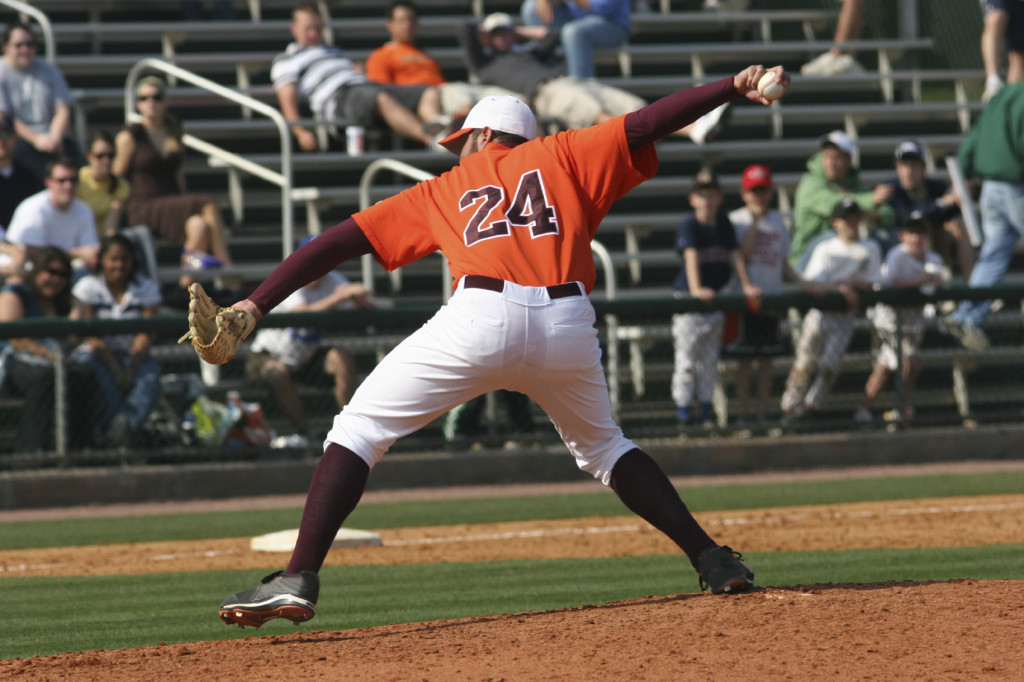 Georgia Personal Training
Georgia Personal Training
Fitness Training For Pitchers
Increase Velocity, Endurance, Shoulder Stability, Core Strength and Rotational Power, Lower Body Strength
Pitching is a position that requires a perfect combination of explosive power and precise mechanics. Throwing a baseball is all about transferring power from the legs and core through the arm in a whip like action. It’s a total body endeavor that relies on many factors. Strength, balance, timing, flexibility, and fluidity of motion are all equally important variables in achieving maximum velocity. A properly designed and executed strength training regimen will enhance all of these. In addition to generating maximum velocity, a pitcher’s other primary focus in training should be preventing injury. Increasing core and shoulder stability, correcting muscle imbalances, and building a powerful lower body and posterior chain will not only increase velocity, but also dramatically decrease the potential for injury and shorten recovery time if injury does occur.
Despite everything we now know about strength training and it’s positive impact on athletic performance, there are still many pitching coaches out there that discourage strength training for pitchers. The old school mentality is that pitching is 100% about mechanics, and strength training will make you bulky and stiff, negatively impacting your mechanics, which will lead to decreased velocity and command, while increasing the risk of injury. There is a measure of truth to this in that an improper strength program can do exactly that. An example would be a heavy bench press and shoulder press regimen. If your son is a pitcher, and is being asked to perform heavy barbell bench press, overhead presses, back squats, clean and jerks, or upright rows by his trainer or high school coaches, you should intervene immediately. All of these movements place immense stress on the shoulder joint, create imbalances, decrease range of motion, and do little to nothing to increase velocity or arm strength. The message is this. There is absolutely no problem with strength training for pitchers. The problem is the incorrect assumption by pitching coaches that all weight training is bad just because some programs out there are poorly designed. At GPT, we approach performance training for pitchers in an intense, safe, and scientific manner. The primary areas of focus for pitching performance are as follows.
 LOWER BODY – If you want to increase pitching velocity, you must develop strong, powerful, and explosive legs. For a pitcher, velocity is primarily generated by the rear leg drive and linear movement of the stride. To develop the power of these movements we utilize techniques such as single leg squats or leg press, bungee ski jumps, reverse lunges, banded side lunges, all manner of plyometrics, and fundamental compound lifts like dead lifts, front squats, and RDLs. While strength is important, power output and maximum force is what we are truly striving for. Force equates to arm speed, and arm speed equates to velocity. At GPT, we specialize our lower body strength training for pitchers by keeping movements explosive and fast twitch focused. A squat rep that takes 3 seconds to perform does not increase our force production. Most high school weightlifting programs will have pitchers doing heavy power lifts and distance running. This is antiquated and improper training. Today’s top pitchers are doing the opposite. Their lifts are dynamic and specific. Pitchers are using more single leg strength movements, since your legs work independently when delivering a pitch. The elites of the game are even using plyometrics and speed work to increase power output and velocity, while also incorporating balance and agility training to optimize mechanics and prevent injury.
LOWER BODY – If you want to increase pitching velocity, you must develop strong, powerful, and explosive legs. For a pitcher, velocity is primarily generated by the rear leg drive and linear movement of the stride. To develop the power of these movements we utilize techniques such as single leg squats or leg press, bungee ski jumps, reverse lunges, banded side lunges, all manner of plyometrics, and fundamental compound lifts like dead lifts, front squats, and RDLs. While strength is important, power output and maximum force is what we are truly striving for. Force equates to arm speed, and arm speed equates to velocity. At GPT, we specialize our lower body strength training for pitchers by keeping movements explosive and fast twitch focused. A squat rep that takes 3 seconds to perform does not increase our force production. Most high school weightlifting programs will have pitchers doing heavy power lifts and distance running. This is antiquated and improper training. Today’s top pitchers are doing the opposite. Their lifts are dynamic and specific. Pitchers are using more single leg strength movements, since your legs work independently when delivering a pitch. The elites of the game are even using plyometrics and speed work to increase power output and velocity, while also incorporating balance and agility training to optimize mechanics and prevent injury.

THROWING SHOULDER– The human shoulder was not designed to throw a baseball. The shoulder joint is a weak joint, held together by muscles, ligaments, tendons, and surrounding fascia, specifically the rotator cuff. The high range of motion of the shoulder combined with the mechanical demands of throwing a baseball put an extreme amount of stress on the shoulder joint and surrounding tissue. To strengthen the throwing shoulder and decrease risk of injury, every pitcher should train their rotator cuff and surround tissue regularly. At GPT, we incorporate movements like internal/external rotations at neutral position and 90 degree abduction, wall crawls, front/lateral raises, shoulder flexion/extensions, face pulls, reverse flys, etc.
CORE – The initial force a pitcher creates from the legs must then transition through the core before it can be delivered by the arm. The core is the hub that connects the entire body’s kinetic chain. If your core is weak, you will have difficulty transferring energy from the legs and hips through the torso and the throwing arm. If energy is lost during this transfer the shoulder joint must work harder to make up for this lost energy. Putting more stress on the joint, and creating a greater risk for injury. At GPT, we utilize sport specific trunk exercises and fast twitch rotational movements as the foundation of building speed, power, and velocity. We train our pitchers to use the elastic properties of muscle and the stretch reflex to maximize power output. We then compliment this ballistic training with a solid core stability regimen, accentuating the primary function of the core muscles, in order to keep our pitchers healthy and pain free year round.

BACK – There are two very important reasons for pitchers to make back training a staple of their upper body strength and conditioning program – injury prevention and improved performance. By strengthening the muscles on the backside of their shoulders (rear delts, rhomboids) pitchers are able to better decelerate their arm after release, reducing the stress placed on the shoulder. The back also plays a large role in creating power and velocity. With the help of a well designed training program, that incorporates a healthy amount of back training, a pitcher can expect increased velocity, less shoulder and lower back pain, improved stamina, and decreased risk of injury.
ELBOW, SPECIFICALLY UCL – or ulnar collateral ligament would literally tear in half from the force of a pitch if not for the muscles in the forearm that help reduce elbow stress. To enhance forearm strength and elbow stability, we incorporate grip training (farmer walks, wrist roller, plate holds, etc) and isolated forearm work as a regular part of our training regimen for pitchers.

